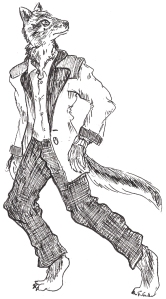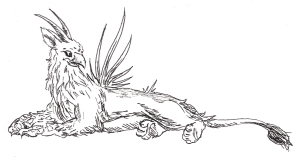The loup garou is a type of werewolf native to France and Francophone regions of North America.
The name “loup garou” translates oddly, as “loup” is the French term for “wolf,” while “garou” is probably based on an old Frankish word meaning “man-wolf,” giving it the name “wolf werewolf.” Odder still, the creature does not seem to live up to its name, looking very little like the canine that such a name suggests. Most often described as having a wolf’s head and tail but remaining upright and seeming to be a man otherwise, this creature resembles the Hollywood portrayal of the Wolf Man. In further contrast to the more mainstream werewolf, a loup garou will retain human intelligence when it transforms, and sometimes attempt to dress as a human.
The original story is tied heavily to Catholicism, as a person typically becomes a loup garou after missing too many masses or confessions or repeatedly skipping the Lenten traditions. This transitioned into a belief that the creature targets Catholics who are similarly lax in their religious duties. A loup garou can also be created by the curse of a witch or sorcerer, although the belief that biting can transfer the curse is a more recent addition to the creature’s lore. In at least one version of the story, the curse will be lifted after 101 days if the victim does not speak of his condition, at which point he or she will pass the curse on to someone else.
The loup garou came to the Americas with French immigrants and settlers, and it mixed with native folklore. Today, very little of the original myth remains. Different regions have different specifics about the creature. In Louisiana, the loup garou is often said to travel via large bats, and in some cases share aspects with vampires, in particular the drinking of blood. Some are obsessed with counting, and can be deterred from attacking if they see something with many small items to count, such as the holes in a sieve, and some fear the sound of croaking frogs. In many cases it is a replacement for the boogey-man to scare children into obedience. Very often the loup garou has lost the ability to transform in the Americanized stories, usually as other myths became tied to it, such as the sasquatch and the wendigo. For example, the Ojibwa people tell stories of the “rugaru,” a creature created by a man indulging in cannibalism, which is the same process for becoming a wendigo. Both creatures are described as large bipedal creatures with fierce animal aspects.

